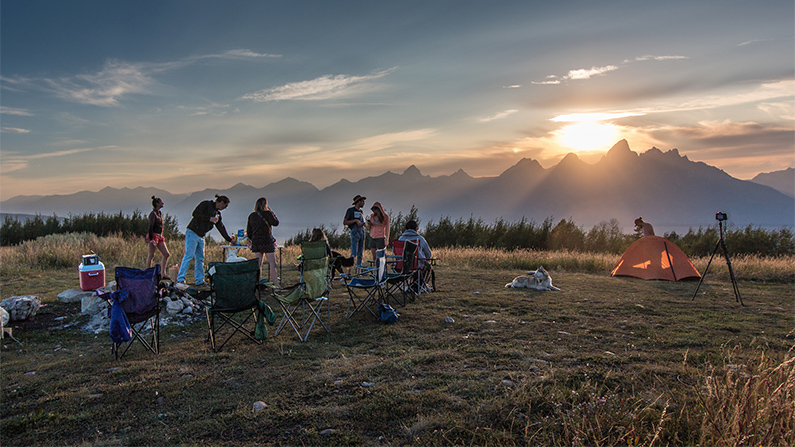In 2011, Teton County doubled down on the tourism economy. That year, local officials created the Jackson Hole Travel & Tourism Board (JHTTB) and charged it with using lodging tax dollars to market the region as a worldwide destination.
The board did just that: In the past decade, visitation numbers have skyrocketed and tourism has become intrinsic to the local economy. In 2021, a record number of travelers flew out of Jackson Hole Airport, and visitation numbers in midsummer were the highest ever recorded in the town of Jackson.
But, while this strategy bolstered the economy, the JHTTB soon realized it needed to do more to address the needs of the community, as housing prices began to skyrocket and local workers struggled to make ends meet.
“We don’t have a destination if we don’t have our residents,” JHTTB vice chair Crista Valentino told KHOL.
So, in 2021, the JHTTB launched a year-long process to create a Sustainable Destination Management Plan for Jackson Hole, with the goal of balancing the needs and desires of the community while still creating high-quality experiences for the many visitors that drive the local economy. After months of gathering public feedback, the JHTTB is in the final stages of drafting the framework. On Thursday, Nov. 17, the group will present a draft to community members and elected officials.
This initiative marks a shift in how Jackson manages its visitors. According to Valentino, the plan isn’t “anti-tourism” — it’s “pro-community.”
“So this really looks at, how do we create that balance?” she said. “How do we consider all of those needs and voices and do it in a way that preserves our culture, preserves our community, preserves our natural environment, while also understanding that to live here, we also rely on tourism to provide that economy and those dollars?”
In 2021, visitors spent about $1.5 billion in Teton County, generating $96.5 million in state and local taxes. Those dollars go towards public transportation, public safety and community events, among other local needs in the county. A large portion of that money also goes toward marketing Jackson Hole as a destination — a source of frustration for the many community members who feel their needs aren’t being met.
Throughout the last year, nearly 5,000 people responded to surveys sent by JHTTB and its consultants. Many of the respondents criticized how Jackson has managed tourism thus far.
“We are losing businesses and Jackson workforce [sic] who have been vital mainstays of this community,” one community member wrote. “Who is going to be left to feed and provide services to these residents and tourists?”
According to Valentino, the JHTTB has heard loud and clear that residents want a different approach to tourism and how it’s managed — and that’s what the new plan is attempting to address.
“It’s not a prescription,” Valentino said. “Rather, we see it as a framework that says, we hear you, we’re going to do things differently, and now it’s going to take a little bit of time figuring out how to implement it and what it looks like. But now we have a pathway that’s going to help get us there.”
The draft plan focuses on eight key areas: education and communications, visitor flow management, workforce recruitment and retention, workforce housing, transportation and mobility, climate action, monitoring and reporting, and governance. It recommends actions such as creating an organization that exclusively manages tourism, as well as incentivizing employees to provide more workforce housing.
The JHTTB — along with consultants from George Washington University and Confluence Sustainability — have spearheaded the drafting process, but the entire community will be responsible for implementing the plan, Valentino said.
“My personal hope is that we see this as our community’s plan that all of us are part of, all of us had a voice in or had the opportunity to put our voice in and now also have the opportunity to implement,” she said.
The JHTTB will host a public meeting presenting the plan on Thursday, Nov. 17 at 6:30 p.m. at the Cloudveil on Center Street. Community members can attend in person or watch online here. Residents can also submit feedback online until Nov. 29. The plan will be finalized on Dec. 23 and implemented over the next five years.






